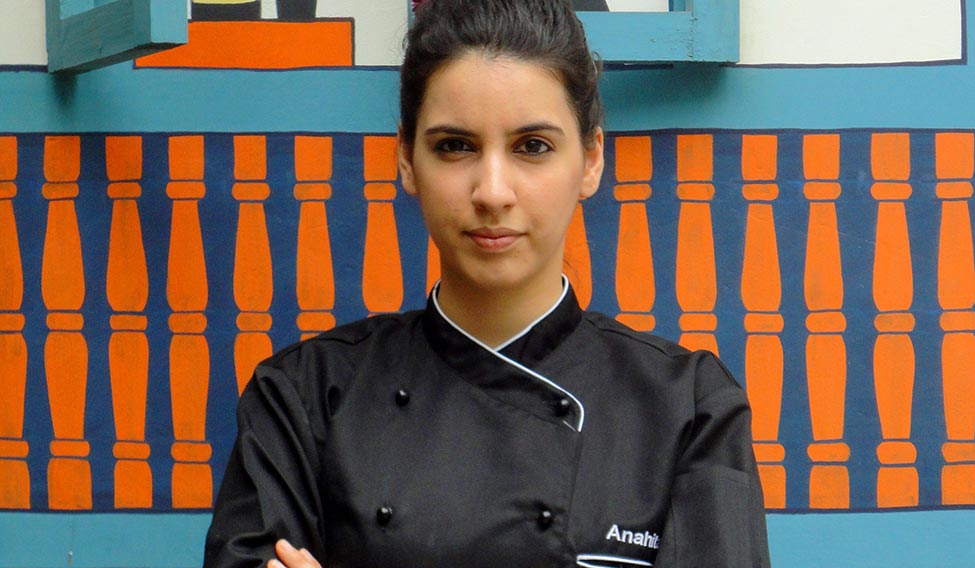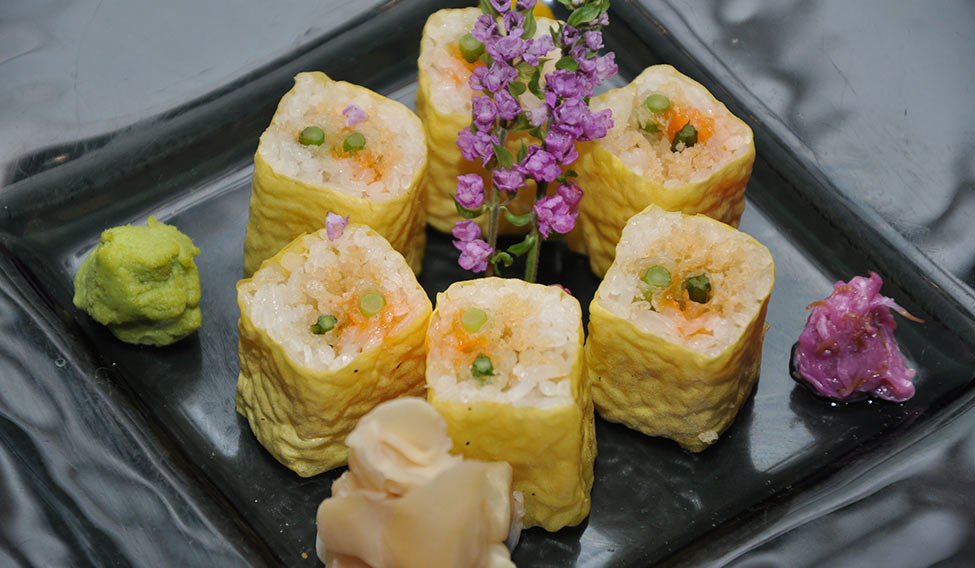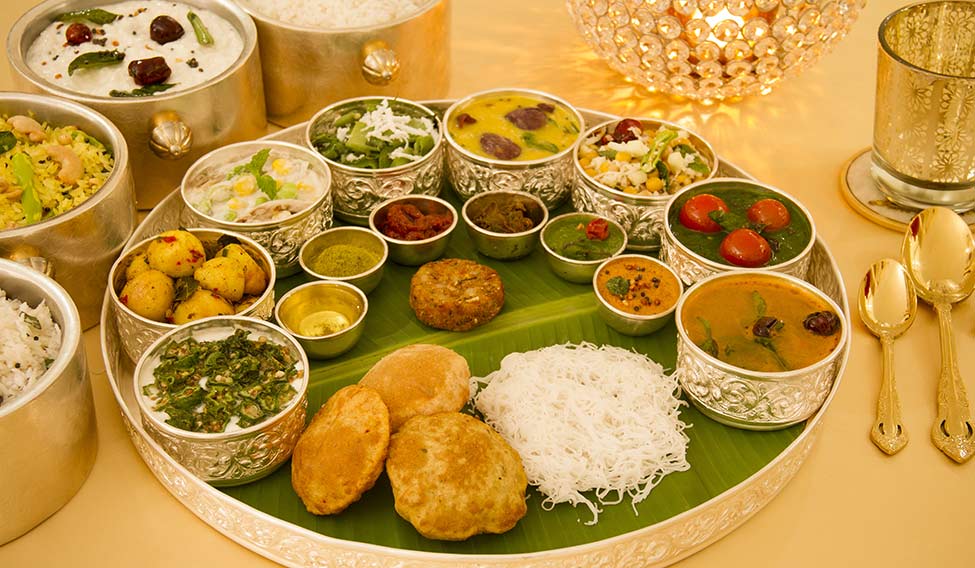One of the fascinating culinary chronicles from the Mughal dynasty is woven around the emperor Humayun, who invited the Shah of Persia for a banquet meal of 33 Indian dishes prepared by his favourite cooks.
While the guests were thoroughly impressed with the lavish spread, there was one simple vegetarian dish they couldn’t stop talking about—the Dal Khushka. A spiced version of the toor dal, smoked with clove and served with basmati and a dash of desi ghee, Dal Khushka got the Persians hooked on to this extraordinarily fragrant dish. “Apparently, the Shah of Persia was willing to give away his army and even his son for that recipe of Dal Khushka,” says Gautam Anand, vice president, pre-opening services, ITC Hotels.
Inspired by many such stories from the royal kitchens of India, Gautam and his team of chefs at the ITC Hotels introduced Royal Vega in Chennai three years ago. At a time when the luxury dining scene in India was bustling with international brands and foreign cuisines, ITC took a bold step and launched an entirely vegetarian restaurant in a five-star setting.
Right from Dal Khushka to Surkh Paneer to Chandragupta Malpua, Royal Vega is all about the food of the kings, minus the meat and the terrifying calories. “Eating fresh is the principal philosophy behind this restaurant. We offer seasonal menus (Ritu Khasa), assorted thali (Ranjit Khasa) and à la carte (Arzoo Jo Mehmaan). Everything on the menu is cooked organically, ensuring the right balance between goodness and flavour,” says chef Varun Mohan of ITC Grand Chola, Chennai.
 Anahita Dhondy is reviving forgotten Parsi recipes at SodaBottleOpenerWala in Mumbai.
Anahita Dhondy is reviving forgotten Parsi recipes at SodaBottleOpenerWala in Mumbai.
Creating luxurious dining experiences for vegetarians has always been a daunting task for chefs across the globe. However, the rise of veganism and a newfound passion for ethically sourced produce have led restaurants to think beyond mock meats, tofu, paneer and salad greens for vegetarian diners. Yearning for familiar flavours and comfort food with minimal calories, today’s seasoned foodie is most happy to spend a fortune on simple delicacies with rich histories.
“With Royal Vega, we have proved that vegetarian food isn’t frugal. Historically speaking, it was only the maharajahs who could afford to have fresh seasonal vegetables. The poor were usually meat eaters,” says Mohan. “We take great care to recreate a bygone era with our delicacies and the stories behind them. For instance, to ensure that each of our breads has the right texture, we mill different kinds of flour at the hotel itself. The angakarhi roti, for example, is made of unleavened whole wheat. We pinch it 101 times to make concentric spirals on the surface. It is then flamed, grilled, seasoned with rock salt and smeared with ghee for that delightful savouriness.”
So if a non vegetarian decides to spend anything between Rs 6,000 and Rs 15,000 on a meal at Royal Vega, the restaurant ensures he doesn’t miss his steaks, pork or chops.
 Seabuckthorn paired with black pepper mousse served at Masque in Mumbai.
Seabuckthorn paired with black pepper mousse served at Masque in Mumbai.
Smitten by European chefs and their artful molecular gastronomy techniques, a lot of Indian restaurateurs have been playing with temperatures and textures to create dramatic dining experiences over the last two years. The deconstructed Indian flavours in their posh avatars were lapped up by a lot of adventurous gastronomes. But not anymore. “Home food is the new exotic. People like to experiment and they have had their dose of molecular gastronomy. They now want old-style, comfort food that is high on nostalgia,” says restaurateur and food critic Osama Jalali.
Dipping into memories and food journals, top chefs across India are going back to basics. While curating some food festivals for the Oberoi hotels, Jalali followed fifth generation khansamas from Old Delhi and Rampur to document more than 40 recipes from the region. “Nobody wants to take the pain of cooking things in the old style and making traditional dishes these days. So the restaurants are doing it for people who want to relive their childhood memories,” says Jalali, who recently opened the Masala Trail, a vegetarian restaurant in Delhi that serves regional street food from across India.
According to Jalali, there is a lot that remains unexplored in the Indian vegetarian cuisine. “The problem is that we don’t have anything documented from the ancient Indian kitchens. Emperor Aurangzeb was a vegetarian and we discovered a fabulous kebab recipe from his time. Made with dalia and masoor dal, Burgul ke Kebab has been one of our treasured discoveries,” he says.
From diet-conscious, organic menus to the rise of regional recipes, a culinary renaissance is brewing in five-star kitchens. Cuisines from Mysore, Uttarakhand and the northeast are finding favour with young diners. At the Taj Mahal Hotel in New Delhi, chef Arun Sundararaj has been working around the Travancore cuisine, tweaking and adapting it for the north Indian palate. “The vegetarian space is always interesting because nature has given us so much to experiment with. At Varq, we have been using spinach in different forms. We have taken cues from the food of traditional Tamil brahmins and given each ingredient a lot of respect,” he says.
Not usually thought of as an obvious vegetarian option, Japanese food, too, is seeing a lot of innovation in India. At the Wasabi by Morimoto, chef Sundararaj does a lot of tofu variants for his vegetarian guests. “We create veg stuff which is similar to scallops in shape, texture and flavour. A lot of guests have started opting for the veg menu at our restaurant,” he says.
Going by the popularity of its iconic restaurant, Jamavar, in India, The Leela introduced its first international outpost in London in December. Led by executive chef Rohit Ghai, who has headlined several Indian Michelin-starred kitchens in the past, Jamavar London offers creative small plates inspired by the street food markets in north and south India. “Chef Ghai has created small plates, keeping the sophisticated palate of London diners in mind,” says Samyukta Nair, head, design and operations of The Leela Palaces, Hotels and Resorts. “Also, his deep dive into the culinary wealth of The Leela while in India has led to certain signature dishes [which are also the most popular] like Lobster Neeruli and Sindhi Gosht. So, Jamavar London reflects the essence of its siblings. Vegetarian dishes like Dal Chawal aur Achar, Jamavar Dal and Gucchi Mutter are also hugely popular among our guests.”
In an attempt to make Parsi cuisine a hit among youngsters, 25-year-old Anahita Dhondy has been travelling to small towns in Gujarat and Maharashtra hunting for forgotten Bawa recipes. “This is more like a community initiative for me. We present regional food in a friendly form. It is not just about collecting recipes but reworking them,” says Dhondy, who is the chef manager at SodaBottleOpenerWala in Mumbai. “I recently learnt the recipe for Malido, which is like the kadha parshad offered at gurdwaras. Made with aata, besan and suji, Malido is a specialty of the priestly families in Udvada, a tiny town in Gujarat. We don’t make such things at home anymore and I want to make it accessible to the younger generation through my culinary skills.”
 Tracing taste: Crispy garlic shoot tempura roll at Wasabi, the Taj Mahal Hotel, New Delhi.
Tracing taste: Crispy garlic shoot tempura roll at Wasabi, the Taj Mahal Hotel, New Delhi.
According to food critic and blogger Maneesh Srivastava, the experimentation is not just limited to cuisines; the cooking techniques and ingredients are also going through a new wave of innovation. “There was a time when all the top chefs were importing ingredients and kitchen supplies at an unimaginable cost, but now everything is being sourced through farms across India.” Right from creamy Burrata from Bengaluru to tuna from Andaman and salmon from Kolkata, chefs now travel to local farms to get fresh ingredients at their convenience. “A lot of Indian diners are now conscious of their responsibility towards local produce and the goodness of Indian grains, so it is a win-win situation for everyone,” says Srivastava.
Inspired by celebrity chef Dan Barber who runs a restaurant out of a barn in New York, Prateek Sadhu scoured the subcontinent for 18 months, looking for reliable ingredients to be used at his newly opened restaurant, Masque, in Mumbai. “I wanted to touch the lives of farmers in some way. We wanted the freshest, flavourful ingredients for our restaurant. So now, the cheese comes from a small town in Andhra, the olive oil from Rajasthan, asparagus from Pune and chocolate from Puducherry,” he says.
Looking for the best seabuckthorn, Sadhu went around Ladakh for a week and got back home with 60kg of those berries. His team conducted more than 50 trials and finally got the perfect pairing for the berries. “We combined it with orange, honey and lime juice to do lollies. It was sweet, tart and peppery. We paired it with a black-pepper mousse served with black pepper emulsion,” he says.
Sadhu’s next stop is going to be the northeast. “I want to learn the fermenting and preservation techniques from there. They use these unique wild leaves as a substitute for salt for preservation. There is so much you can do with the huge variety of chillies. I have a lot to do,” he says.
A typical experience at Masque is all about slow food and leisure dining. The restaurant only does tasting menus priced between 14,000 and 16,000. “Initially, it was a bit hard to sell the concept to our guests,” says Sadhu, “but we have seen a tremendous response over the past few months.”
TOP PICKS / DINING

GAGGAN, Bangkok: Third time winner of ‘Asia’s 50 Best Restaurant’ award, this restaurant helmed by Kolkata-born chef Gaggan Anand has put Indian cuisine on the world map like never before. The fun menu, elaborated with emoji, serves up arresting combinations (think charcoal coated vada pavs and egg bhurji soufflé ) plated in the most artistic ways.
NUSR-ET, Four Seasons Resort in Dubai at Jumeirah Beach, for a dining experience unlike any other and for being a master creation of the renowned Chef Nusret Gökçe.
JOEL ROBUCHON in Paris, a 2-star Michelin restaurant known for its unique dining concepts.
EL BULLI, Spain: While naysayers have written molecular gastronomy off, Chef Ferran Adrià’s creative quest is still at the top of the game. The meditative attention to detail, simplicity of presentation as well as the fabulous location made El Bulli a mecca of creativity and inspired innovation.

NOMA in Denmark stood out year after year for its fabulous reinvention of Nordic cuisine for the global gourmand. Food lovers across the world are waiting in anticipation for this legend’s return in mid-2017.







